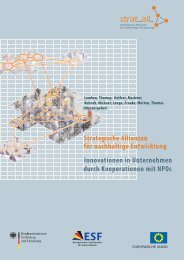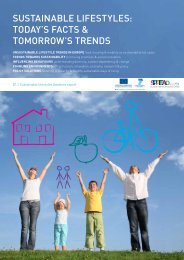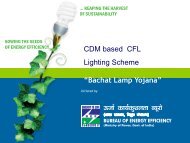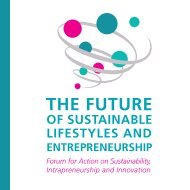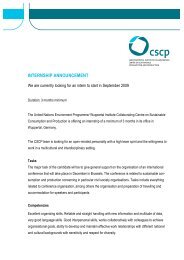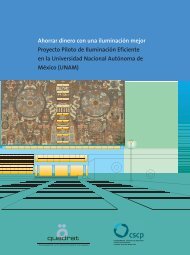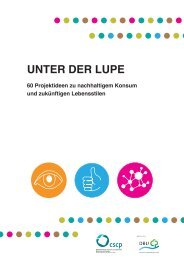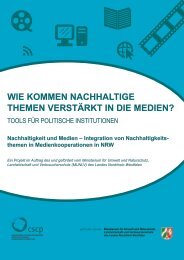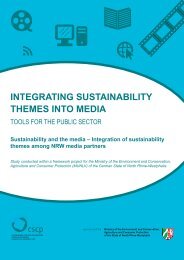Retailers Calendar
Retailers Calendar
Retailers Calendar
Create successful ePaper yourself
Turn your PDF publications into a flip-book with our unique Google optimized e-Paper software.
Prioritization of Options<br />
To read<br />
more about<br />
potential<br />
barriers to<br />
implementing<br />
consumerside<br />
improvement,<br />
see UNEP’s<br />
Greening<br />
Shops and<br />
Saving Costs<br />
Guide, pg. 46.<br />
http://www.un<br />
ep.fr/pc/retail<br />
Once your major goals are aligned and you have highlighted several options, you will want to decide which option<br />
would be the most appropriate for your business. There are three major factors that will help you to decide:<br />
Operational analysis<br />
Examine your business, including your product offerings, staff competencies, and business capabilities. Review<br />
your corporate strengths, weaknesses, and potential project barriers. You may also want to review current news<br />
and “hot” topics: where can your business fit? It may help to review the necessities needed for a potential project,<br />
and evaluate if your company has the matching resources to plan and successfully execute the project in mind.<br />
Is this project a strategic alignment? For example, do you have the corporate knowledge to create a sustainable<br />
lifestyles marketing scheme or would your company be better off creating a take-back scheme?<br />
Financial analysis<br />
A classic financial evaluation is warranted even for ideas that aim to create environmental improvements. A<br />
discounted cash flow (DCF) is probably the most widely used tool to understand financial payback. A DCF<br />
determines the present value of future cash flows using the appropriate discount rate. A DCF may be able to<br />
show you that investing in a project now could save you big money (or not) in the future. At the very least, a<br />
simply cost-benefit analysis can also be used.<br />
Potential for intangible value creation<br />
Intangible benefits can often draw in revenues not quantifiable in a rough financial analysis. Improving customer<br />
side environmental issues can improve customer relationships, brand equity and reputation, business continuity,<br />
and even strategic alliances. Customer relationships and increased brand reputation attract revenue and also<br />
decrease the likelihood that your company could be attacked from negative press. Many companies, even Wal-<br />
Mart, are trying to improve their reputation by adding to their environmental portfolio. Improving customer<br />
relationships also helps to gain repeat and loyal customers. Business continuity and strategic alliances can be<br />
created through improving your products, via supply chain improvements, and reaching out to new partners, such<br />
as NGOs and even policy makers. <strong>Retailers</strong> such as Kesko and Co-op in Europe are creating partnerships with<br />
NGOs, such as Fair Trade and organic organizations, to improve sustainable product marketing. A project’s<br />
potential for intangible value creation can be a large bonus for your organization.<br />
Intangible value can be measured through an expanded cost-benefit analysis, by assigning these intangibles a<br />
monetary value. A pilot project can also help evaluate the intangible value of your proposed project. For an<br />
example of improving consumer relationships through improving environmental issues see Box 11.1 below<br />
72



